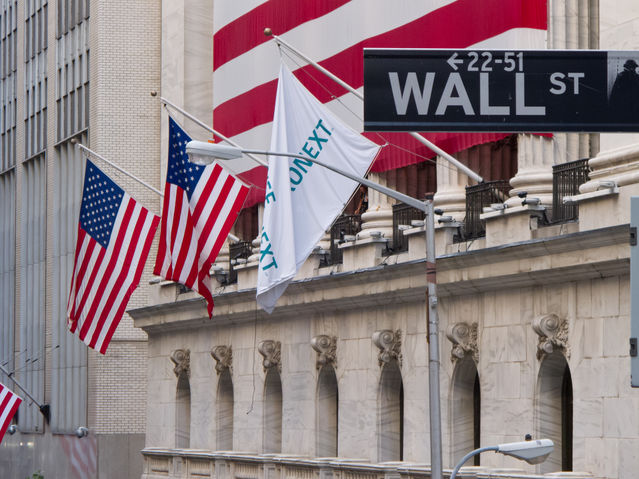Fear
Did Hurricane Michael Cause Stock Markets to Plunge?
Research explains the link between storm systems and stock market crashes.
Posted October 19, 2018

Here’s a crazy idea: research tells us that storms can make stock markets tank. But in a real-world scenario, does the concept really hold up? Epic storms systems that touched down on each side of the Atlantic last week—Wednesday, October 10, 2018—offered a real-time stress test.
In a study of four stock markets (NASDAQ, S&P500, Amex, NYSE), geomagnetic storms were found to exert a profound effect on human behaviour, with the effect most prominent during the 6 days following a storm (the ‘recovery’ phase), as evidenced in research by a strong negative, significant relationship between stock returns and geomagnetic storm activity, ranging from -0.84% to -2.1% (S&P500), -1.11% to -2.40% (AMEX), -1.60% to - 2.51% (NASDAQ) and -2.1% to -1.76% (NYSE).
Institutional investors seem to find the idea tantalizing and have invested accordingly—Wall Street titans Barclays, Goldman Sachs, Deutsche Bank, and JP Morgan Chase all regularly integrate meteorological data into their trading strategies, and the gargantuan $28 billion AuM Citadel LLC fund recently acquired the team behind the innovative weather-focused fund Cumulus (including founder Peter Brewer).
The idea of weather affecting stock returns is not, in fact, particularly new; back in 1939, for example, it was noted that, "Conditions which cause equal deviations in rainfall at New York tend to create equivalent changes in mass psychology, and consequently to the level of stock prices."
Barometric Pressure & Bonds
On Wednesday, October 10, 2018, Hurricane Michael barreled into the northern Gulf coast of Florida before moving swiftly across the U.S. toward the Atlantic Ocean and Europe. A barometric pressure drop to 919 millibars meant that Michael, a devastating Category 4 hurricane, eclipsed Hurricane Katrina in strength and earned the title of the strongest ever to hit the Florida Panhandle. Shortly after, and on the other side of the Atlantic, Storm Callum became the worst storm system to hit the UK in 30 years, referred to as a rare ‘atomic bomb’ cyclone due to its central pressure drop of 48 hPa (from 986-938hPa) in 24 hours.
Given that Hurricane Michael barreled across the US, causing major rainfall and flooding along the East coast (including NY), we would, according to theory, expect to see some broad perturbations in stock prices. Further, given that there is "strong empirical support in favor of a geomagnetic-storm effect in stock returns," and that, "Unusually high levels of geomagnetic activity have a negative, statistically, and economically significant effect on the following week’s stock returns for all US stock market indices," we’d expect to see some really major stock market outages—and the effect should be expected for around a week (the aforementioned storm recovery phase).

Stocks & Storms
Amazingly, that’s exactly what happened.
The day Hurricane Michael hit, the Dow plummeted 831 points, its third worst point decline ever, according to CNN. The S&P fell more than 3.3 percent, European equities plunged, the Nasdaq Composite fell 4.08 percent, and the Nasdaq Index 100 experienced its worst day in 7 years. The rout continued the following day, with the Dow plunging at one point by 699 points the following day, effectively ending a historic bull market run.
Effects on mass psychology appeared notable; amidst the financial and meteorological tumult, President Trump commented that "The Fed has gone crazy." The CBOE Volatility Index (VIX), colloquially referred to as ‘the Fear Index’, surged 43.9 percent (its 11th largest gain ever) the day the storm system hit, and the CNN Fear & Greed Index swung wildly from the previous month’s Greed to Extreme Fear.
Riding out the Storm: Recovery phase
How long did the outage last? A week after Hurricane Michael hit, U.S. stocks roared back into life, recording their biggest gain in six months. The Dow Jones Industrial jumped 547 points and the S&P 500 climbed 2.1 percent, its largest gain for 7 months.
In other words, the theories really held up.
Nature vs. the Markets
From wherever you stand, weather-focused research seemed to offer a pretty tantalizing (albeit seemingly maverick) insight into last weeks’ crazy stock market rout (perhaps cyclical weather patterns contributed to the fact that other historic outages—the 1929 Wall Street crash, Black Monday in 1987, and the 2008 financial crisis, for example, all also hit in October)—which is probably why Wall Street has in recent years sat up and taken note.

Turning to meteorology isn’t as crazy or maverick as you might first think; evolutionary biology paints a clear picture of man’s co-existence with, and dependence on, nature—and it is subsequently clear that the elements routinely exert a decisive effect on us physiologically and psychologically (e.g. Morris, 2003). Geomagnetic storms correlate with a lot more than damaging stock market returns, too—they’ve also been found to affect rising crime levels, sleep disturbances, and psychiatric admissions. If you have small kids and you’re married to a commodities trader, you might get really unlucky when humidity and solar radiation levels rise—they can lead to greater crankiness in toddlers as well as negatively impact commodity market trading activity. Even lunar cycles have been found to affect stock market returns. Weather even affects the way we vote, carrying the potential to influence entire elections. For example, high rainfall was found to impact voter turnout by as much as 3.8 percent, leading political scientists Larry Bartels and Christopher Achen to conclude that "2.8 million people voted against Al Gore in 2000 because their states were too dry or too wet ."
Ultimately, a tinderbox of variables, including rising interest rates might have constituted the root cause of Wednesday’s downward stock spiral, but a geomagnetic storm might have provided the spark that lit the flame in terms of its exact time and duration. Whilst the events of October 10, 2018 offer just one case study, it nevertheless offers a pretty cool example of theory in action—one that might just carry major implications for future trading decisions. And that prospect is a tantalizing idea indeed.




